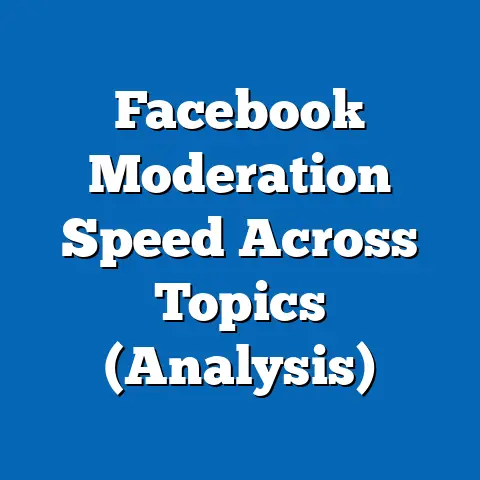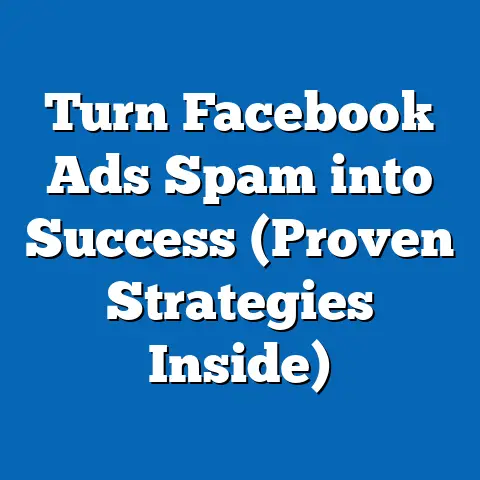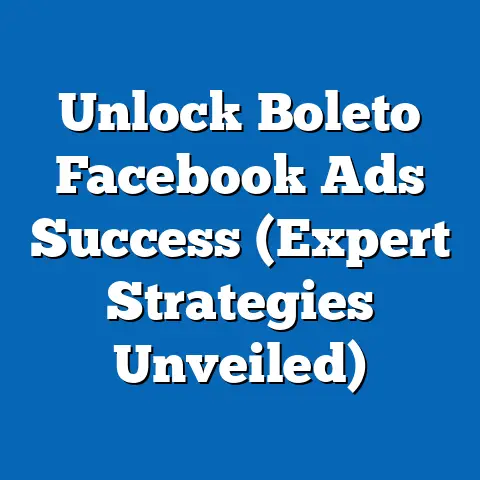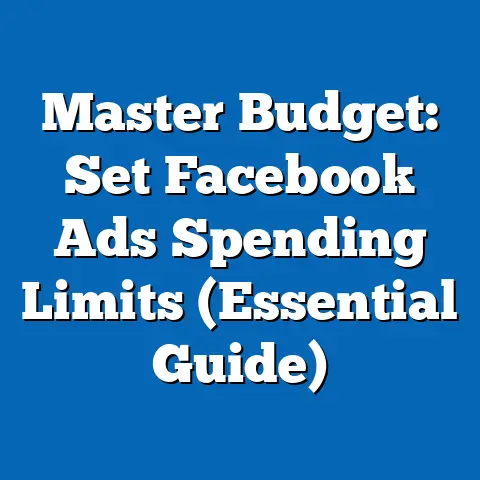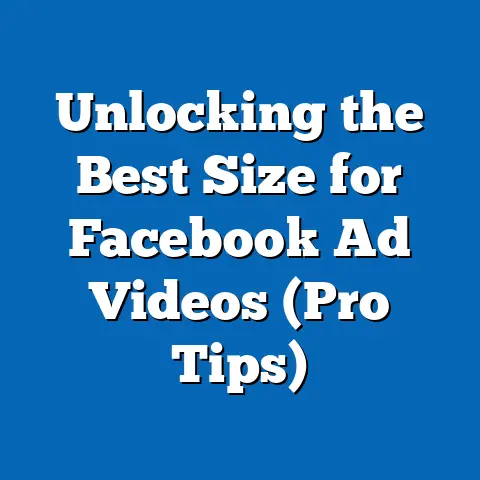Harness Facebook Lead Ads API for Higher Conversions (Expert Guide)
Harness Facebook Lead Ads API for Higher Conversions: Expert Guide
Introduction
I’ve seen it time and again: businesses pour their hearts and souls (not to mention their marketing budgets) into generating leads, only to be met with frustratingly low conversion rates. They’re stuck in a cycle of chasing down lukewarm prospects who never quite turn into paying customers. The problem? Often, it’s not a lack of leads, but a lack of quality leads, and an inefficient system for nurturing those leads.
Think about it: You’re investing in eye-catching ads, crafting compelling copy, and meticulously targeting your ideal audience. You’re getting clicks, you’re generating leads… but then what? Those leads end up in a spreadsheet, buried under a mountain of other data, or worse, lost in the abyss of an unorganized email inbox. The follow-up is slow, generic, and impersonal. No wonder those leads aren’t converting!
This is where the Facebook Lead Ads API comes in. It’s not just another tool; it’s a game-changer for businesses serious about maximizing their return on investment. The Facebook Lead Ads API can streamline the entire process of collecting and managing leads, ultimately leading to higher conversion rates. I’ve personally witnessed how this technology can transform a struggling lead generation campaign into a well-oiled conversion machine.
In this expert guide, I’m going to walk you through everything you need to know about leveraging the Facebook Lead Ads API effectively. We’ll cover the basics of Lead Ads, dive deep into the technical aspects of the API, and explore proven strategies for maximizing your conversion rates. This isn’t just about understanding the technology; it’s about using it to build a more efficient, profitable, and sustainable lead generation system.
I know navigating the world of APIs can seem daunting, especially if you’re not a tech expert. But trust me, even with a basic understanding of the concepts, you can harness the power of the Lead Ads API to unlock a new level of success in your marketing efforts. So, let’s get started!
Section 1: Understanding Facebook Lead Ads and Their Benefits
Before we dive into the technical intricacies of the API, let’s make sure we’re all on the same page about Facebook Lead Ads themselves. These are the foundation upon which our conversion-boosting strategies will be built.
What Are Facebook Lead Ads?
Facebook Lead Ads are a type of ad format specifically designed for lead generation. Unlike traditional ads that direct users to an external landing page, Lead Ads keep users within the Facebook platform. When someone clicks on a Lead Ad, a pre-filled form pops up directly within Facebook. This form can collect information like name, email address, phone number, and other details you need to qualify and follow up with potential customers.
Think of it as a streamlined, mobile-friendly way to capture leads without disrupting the user’s experience. They don’t have to leave Facebook, fumble with clunky mobile forms, or wait for a slow-loading landing page. It’s all right there, at their fingertips.
I remember one of my first experiences using Lead Ads. I was working with a local real estate agent who was struggling to generate leads online. We tried everything – website landing pages, traditional Facebook ads, even some Google Ads campaigns. But nothing seemed to be working. Then we implemented Lead Ads, and the results were almost immediate. The ease of use and mobile-friendliness of the forms made it incredibly easy for potential buyers to submit their information.
The Benefits of Using Facebook Lead Ads
The appeal of Facebook Lead Ads lies in their simplicity and effectiveness. Here are some key benefits:
- Ease of Use: As I mentioned earlier, Lead Ads are incredibly user-friendly, both for advertisers and potential customers. Creating a Lead Ad is a straightforward process within the Facebook Ads Manager, and filling out the form is a breeze for users.
- Mobile-Friendly Forms: In today’s mobile-first world, this is a huge advantage. Lead Ads are designed to work seamlessly on mobile devices, ensuring a smooth and convenient experience for users on the go. This is especially important considering that the vast majority of Facebook users access the platform through their mobile devices.
- Targeted Audience Reach: Facebook’s unparalleled targeting capabilities allow you to reach a highly specific audience with your Lead Ads. You can target users based on demographics, interests, behaviors, and even custom audiences based on your existing customer data.
- Pre-Filled Information: Facebook automatically pre-fills the form with information users have already provided on the platform, such as their name, email address, and phone number. This reduces friction and makes it even easier for users to submit their information.
- Integration with CRM Systems: While the basic Lead Ads functionality is great, the real power comes when you integrate them with your CRM system. This allows you to automatically transfer leads to your CRM, where you can nurture them and track their progress through the sales funnel. This is where the API comes in, which we’ll discuss later.
Success Stories and Statistics
Don’t just take my word for it. Here are some statistics and case studies that demonstrate the effectiveness of Facebook Lead Ads:
- Lower Cost Per Lead (CPL): In many cases, Lead Ads can generate leads at a lower cost than traditional advertising methods. This is because of the reduced friction and improved user experience.
- Higher Conversion Rates: Because Lead Ads make it so easy for users to submit their information, they often result in higher conversion rates than traditional landing pages.
- Increased Lead Volume: By simplifying the lead capture process, Lead Ads can help you generate a higher volume of leads.
I’ve personally seen businesses reduce their CPL by as much as 50% by switching from traditional landing pages to Facebook Lead Ads. The key is to optimize your ad copy, targeting, and lead form to ensure that you’re attracting the right audience and capturing the most relevant information.
Key Takeaway: Facebook Lead Ads are a powerful tool for generating leads directly within the Facebook platform. Their ease of use, mobile-friendliness, and targeting capabilities make them an effective alternative to traditional advertising methods.
Next Step: Familiarize yourself with the Facebook Ads Manager and explore the different options for creating Lead Ads. Start experimenting with different ad copy, visuals, and targeting options to see what works best for your business.
Section 2: Introduction to Facebook Lead Ads API
Now that we’ve established the value of Facebook Lead Ads, let’s delve into the real magic: the Facebook Lead Ads API. This is where we move from basic lead capture to sophisticated lead management and automation.
What is the Facebook Lead Ads API?
The Facebook Lead Ads API is a powerful tool that allows developers to programmatically access and manage leads generated through Facebook Lead Ads. Think of it as a bridge between your Facebook Lead Ads and your existing marketing systems, such as your CRM, email marketing platform, or other business applications.
Without the API, you’re stuck manually downloading leads from Facebook and importing them into your CRM. This is time-consuming, inefficient, and prone to errors. The API automates this process, allowing you to seamlessly transfer leads to your CRM in real-time.
I remember the days before the Lead Ads API. We were manually downloading CSV files of leads, cleaning up the data, and then importing it into our CRM. It was a tedious and error-prone process that took hours each week. The API completely eliminated this manual work, freeing up our team to focus on more strategic tasks.
Key Features of the API
The Facebook Lead Ads API offers a wide range of features that can help you streamline your lead management process:
- Automated Lead Retrieval: The API automatically retrieves new leads as soon as they are submitted through your Lead Ads.
- Real-Time Data Access: You can access lead data in real-time, allowing you to follow up with prospects immediately.
- Integration with CRM Systems: The API can be integrated with popular CRM systems like Salesforce, HubSpot, and Zoho CRM, allowing you to seamlessly transfer leads and track their progress through the sales funnel.
- Custom Integrations: If you’re using a custom CRM or marketing platform, you can use the API to build a custom integration that meets your specific needs.
- Lead Validation: You can use the API to validate lead data and ensure that it’s accurate and complete.
- Webhooks: Webhooks allow you to receive real-time notifications when new leads are submitted, triggering automated workflows in your CRM or other applications.
Common Use Cases
The Facebook Lead Ads API is particularly valuable for businesses in industries that rely heavily on lead generation, such as:
- Real Estate: Real estate agents can use the API to automatically capture leads from potential buyers and sellers, and then follow up with them quickly and efficiently.
- Education: Schools and universities can use the API to generate leads for their programs and courses, and then nurture those leads with targeted email campaigns.
- E-commerce: E-commerce businesses can use the API to capture leads for their products and services, and then follow up with them with personalized offers and promotions.
- Financial Services: Banks, insurance companies, and other financial institutions can use the API to generate leads for their products and services, and then qualify those leads based on their financial needs and goals.
- Automotive: Car dealerships can use the API to generate leads for their vehicles, and then schedule test drives and follow up with potential buyers.
Key Takeaway: The Facebook Lead Ads API is a powerful tool that automates the process of capturing and managing leads generated through Facebook Lead Ads. It allows you to seamlessly integrate your Lead Ads with your CRM and other marketing systems, improving efficiency and maximizing your conversion rates.
Next Step: Start researching the different CRM systems and marketing platforms that offer native integrations with the Facebook Lead Ads API. Consider which platform best meets your needs and budget.
Section 3: Setting Up Your Facebook Lead Ads API
Okay, let’s get our hands dirty and dive into the practical steps of setting up your Facebook Lead Ads API. This might seem a bit technical, but I promise to break it down into manageable steps.
Prerequisites
Before you can start using the Facebook Lead Ads API, you’ll need to have the following:
- A Facebook Developer Account: If you don’t already have one, you’ll need to create a Facebook Developer account. This is free and easy to do. Just go to https://developers.facebook.com/ and follow the instructions.
- A Facebook Page: You’ll need a Facebook Page to run your Lead Ads. If you don’t already have one, you can create one in a few minutes.
- A Facebook Ad Account: You’ll also need a Facebook Ad Account to create and manage your Lead Ads. If you don’t already have one, you can create one in the Facebook Ads Manager.
- A CRM or Email Marketing Platform: Ideally, you’ll want to integrate the API with your CRM or email marketing platform. This will allow you to automatically transfer leads and nurture them.
Step-by-Step Guide to Setting Up the API
Here’s a step-by-step guide to setting up the Facebook Lead Ads API:
-
Create a Facebook App: Go to the Facebook Developers website and create a new app. Choose the “For Everything Else” option and give your app a descriptive name.
-
Add the Lead Ads API Product: In your app dashboard, find the “Add Product” section and select “Lead Ads API.” Follow the instructions to add the Lead Ads API to your app.
-
Configure Webhooks: Webhooks are essential for receiving real-time notifications when new leads are submitted. To configure webhooks, go to the “Webhooks” section of your app dashboard and subscribe to the “leadgen” field for your Facebook Page. You’ll need to provide a callback URL where Facebook can send the notifications. This URL will typically be an endpoint on your server that can process the lead data.
-
Obtain an Access Token: You’ll need an access token to authenticate your API requests. To obtain an access token, go to the “Access Token Tool” in your app dashboard and generate a Page Access Token for your Facebook Page. Make sure to grant the necessary permissions, such as
leads_retrievalandmanage_pages. -
Test Your Integration: Use the Facebook Lead Ads Testing Tool to create test leads and verify that your integration is working correctly. This tool allows you to simulate lead submissions and ensure that the data is being transferred to your CRM or email marketing platform as expected.
Create a Facebook App: Go to the Facebook Developers website and create a new app. Choose the “For Everything Else” option and give your app a descriptive name.
Add the Lead Ads API Product: In your app dashboard, find the “Add Product” section and select “Lead Ads API.” Follow the instructions to add the Lead Ads API to your app.
Configure Webhooks: Webhooks are essential for receiving real-time notifications when new leads are submitted. To configure webhooks, go to the “Webhooks” section of your app dashboard and subscribe to the “leadgen” field for your Facebook Page. You’ll need to provide a callback URL where Facebook can send the notifications. This URL will typically be an endpoint on your server that can process the lead data.
Obtain an Access Token: You’ll need an access token to authenticate your API requests. To obtain an access token, go to the “Access Token Tool” in your app dashboard and generate a Page Access Token for your Facebook Page. Make sure to grant the necessary permissions, such as leads_retrieval and manage_pages.
Test Your Integration: Use the Facebook Lead Ads Testing Tool to create test leads and verify that your integration is working correctly. This tool allows you to simulate lead submissions and ensure that the data is being transferred to your CRM or email marketing platform as expected.
I remember struggling with the webhook configuration when I first started using the API. It took me a few hours to figure out the correct settings and ensure that the notifications were being sent to my server. But once I got it working, it was a game-changer. I was able to receive leads in real-time and immediately follow up with prospects.
Creating a Lead Form That Converts
The key to successful lead generation with Facebook Lead Ads is to create a lead form that converts. Here are some best practices to keep in mind:
- Keep it Simple: Don’t ask for too much information. The more fields you add to your form, the lower your conversion rate will be. Focus on collecting the most essential information you need to qualify and follow up with leads.
- Use Pre-Filled Fields: Take advantage of Facebook’s ability to pre-fill the form with information users have already provided on the platform. This reduces friction and makes it easier for users to submit their information.
- Write Clear and Concise Copy: Use clear and concise copy to explain the value of your offer and what users will get in exchange for submitting their information.
- Include a Privacy Policy: Make sure to include a link to your privacy policy so that users know how you will use their information.
- Test Different Formats: Experiment with different form formats to see what works best for your audience. Try using different questions, fields, and layouts to optimize your conversion rate.
Connecting the API to Your CRM
The final step is to connect the Facebook Lead Ads API to your CRM or email marketing platform. This will allow you to automatically transfer leads and nurture them.
Many popular CRM systems, such as Salesforce, HubSpot, and Zoho CRM, offer native integrations with the Facebook Lead Ads API. If your CRM offers a native integration, you can simply follow the instructions provided by the CRM vendor to connect the API.
If your CRM doesn’t offer a native integration, you’ll need to build a custom integration using the API. This will require some programming knowledge, but it’s definitely achievable. You can use a programming language like PHP, Python, or Node.js to build a script that retrieves lead data from Facebook and transfers it to your CRM.
Key Takeaway: Setting up the Facebook Lead Ads API requires a few technical steps, but it’s well worth the effort. By automating the process of capturing and managing leads, you can save time, improve efficiency, and maximize your conversion rates.
Next Step: Start setting up your Facebook Developer account and creating your Facebook app. Familiarize yourself with the API documentation and start experimenting with the different features.
Section 4: Best Practices for Maximizing Conversions
Now that you’ve got your Facebook Lead Ads API set up and integrated with your CRM, it’s time to focus on maximizing your conversion rates. This is where the art and science of marketing come into play.
Compelling Ad Copy and Visuals
Your ad copy and visuals are the first thing that potential customers will see, so it’s crucial to make a strong impression. Here are some tips for creating compelling ad copy and visuals:
- Know Your Audience: Understand your target audience’s needs, wants, and pain points. Tailor your ad copy and visuals to resonate with them.
- Highlight the Benefits: Focus on the benefits of your offer, not just the features. Explain how your product or service will solve their problems and improve their lives.
- Use Strong Headlines: Your headline is the most important part of your ad copy. Use a strong headline that grabs attention and entices users to learn more.
- Include a Clear Call to Action: Tell users exactly what you want them to do. Use a clear and concise call to action, such as “Download Now,” “Get a Free Quote,” or “Sign Up Today.”
- Use High-Quality Images and Videos: Use high-quality images and videos that are visually appealing and relevant to your offer. Avoid using stock photos that look generic and inauthentic.
- Test Different Creative: Experiment with different ad copy and visuals to see what works best for your audience. Use A/B testing to compare different versions of your ads and identify the most effective creative.
I’ve found that using customer testimonials in your ad copy can be incredibly effective. When potential customers see that other people have had positive experiences with your product or service, they’re more likely to trust you and submit their information.
A/B Testing
A/B testing is a crucial part of optimizing your Facebook Lead Ads campaigns. It allows you to compare different versions of your ads and lead forms to see what performs best.
Here are some things you can A/B test:
- Ad Copy: Test different headlines, descriptions, and calls to action.
- Visuals: Test different images and videos.
- Targeting: Test different targeting options, such as demographics, interests, and behaviors.
- Lead Form Fields: Test different questions and fields in your lead form.
- Form Layout: Test different layouts for your lead form.
To conduct an A/B test, create two versions of your ad or lead form. Change only one element at a time so that you can isolate the impact of that change. Run both versions of your ad or lead form simultaneously and track the results. After a sufficient period of time, analyze the data to see which version performed better.
Analyzing Lead Data
The Facebook Lead Ads API provides you with a wealth of data about your leads. You can use this data to refine your targeting, improve your ad copy, and optimize your lead forms.
Here are some metrics you should track:
- Cost Per Lead (CPL): This is the cost of generating one lead.
- Lead Quality Score: This is a subjective score that you assign to each lead based on its potential value.
- Conversion Rate: This is the percentage of leads that convert into customers.
- Return on Ad Spend (ROAS): This is the amount of revenue you generate for every dollar you spend on advertising.
By analyzing these metrics, you can identify areas for improvement and make data-driven decisions to optimize your campaigns.
Key Takeaway: Maximizing your conversion rates with Facebook Lead Ads requires a combination of compelling ad copy and visuals, A/B testing, and data analysis. By continuously optimizing your campaigns, you can generate more leads and convert them into paying customers.
Next Step: Start A/B testing different elements of your ads and lead forms. Track your metrics and analyze the data to identify areas for improvement.
Section 5: Common Challenges and Troubleshooting
Even with the best planning and execution, you’re bound to encounter some challenges when using the Facebook Lead Ads API. Here are some common issues and troubleshooting tips:
Data Discrepancies
One common challenge is data discrepancies between Facebook and your CRM. This can happen for a variety of reasons, such as:
- Data Encoding Issues: Make sure that your data is encoded correctly. Use UTF-8 encoding to ensure that all characters are displayed properly.
- Time Zone Differences: Be aware of time zone differences between Facebook and your CRM. This can affect the order in which leads are processed.
- API Rate Limits: Facebook imposes rate limits on API requests. If you exceed these limits, your requests may be throttled or rejected.
To troubleshoot data discrepancies, carefully review your code and data mappings. Make sure that you’re handling data encoding and time zones correctly. Also, monitor your API usage to ensure that you’re not exceeding the rate limits.
Integration Issues
Another common challenge is integration issues between the Facebook Lead Ads API and your CRM. This can happen if:
- API Credentials are Incorrect: Double-check your API credentials to make sure that they’re correct.
- Permissions are Insufficient: Make sure that your app has the necessary permissions to access the Lead Ads API.
- The CRM API is Down: Check the status of your CRM API to make sure that it’s up and running.
To troubleshoot integration issues, carefully review your API credentials, permissions, and CRM API status. Consult the documentation for both the Facebook Lead Ads API and your CRM API for troubleshooting tips.
Compliance with Data Protection Regulations
When collecting and managing lead data, it’s crucial to comply with data protection regulations like GDPR and CCPA. This means:
- Obtaining Consent: You must obtain explicit consent from users before collecting their personal information.
- Providing Transparency: You must be transparent about how you will use users’ personal information.
- Protecting Data Security: You must take reasonable measures to protect users’ data from unauthorized access, use, or disclosure.
To ensure compliance with data protection regulations, consult with a legal expert and implement appropriate data privacy policies and procedures.
I’ve learned the hard way that data privacy is not something to be taken lightly. A few years ago, I worked with a client who was fined for failing to comply with GDPR. It was a costly and embarrassing experience. Since then, I’ve made sure to prioritize data privacy in all of my marketing campaigns.
Key Takeaway: Using the Facebook Lead Ads API can present some challenges, but by understanding the common issues and implementing appropriate troubleshooting steps, you can ensure a smooth and successful experience.
Next Step: Develop a troubleshooting checklist for common issues. Consult with a legal expert to ensure that you’re complying with data protection regulations.
Section 6: Measuring Success and Continuous Improvement
The final piece of the puzzle is measuring the success of your Facebook Lead Ads campaigns and continuously improving your strategy based on performance metrics.
Key Performance Indicators (KPIs)
Here are some key performance indicators (KPIs) you should track:
- Cost Per Lead (CPL): This is the cost of generating one lead.
- Lead Quality Score: This is a subjective score that you assign to each lead based on its potential value.
- Conversion Rate: This is the percentage of leads that convert into customers.
- Return on Ad Spend (ROAS): This is the amount of revenue you generate for every dollar you spend on advertising.
- Lead-to-Opportunity Rate: This is the percentage of leads that become qualified opportunities in your sales pipeline.
- Opportunity-to-Customer Rate: This is the percentage of opportunities that convert into paying customers.
By tracking these KPIs, you can get a clear picture of how your Facebook Lead Ads campaigns are performing and identify areas for improvement.
Continuous Improvement
Continuous improvement is essential for maximizing the effectiveness of your Facebook Lead Ads campaigns. This means:
- Regularly Reviewing Your Metrics: Set aside time each week to review your KPIs and identify trends.
- A/B Testing New Strategies: Continuously experiment with different ad copy, visuals, targeting options, and lead form fields.
- Analyzing Your Data: Use data analytics tools to gain insights into your audience’s behavior and preferences.
- Staying Up-to-Date with the Latest Trends: Keep abreast of the latest trends in Facebook advertising and digital marketing.
I’ve found that setting up a regular reporting schedule can be incredibly helpful. I create a weekly report that summarizes my key metrics and highlights any areas for improvement. This helps me stay focused on my goals and make data-driven decisions.
Utilizing Facebook Insights
Facebook Insights is a powerful tool that provides you with a wealth of data about your audience and your ad performance. You can use Facebook Insights to:
- Understand Your Audience: Learn about your audience’s demographics, interests, and behaviors.
- Track Your Ad Performance: See how your ads are performing in terms of reach, engagement, and conversions.
- Identify Trends: Identify trends in your audience’s behavior and preferences.
By utilizing Facebook Insights, you can gain valuable insights that can help you improve your Facebook Lead Ads campaigns.
Key Takeaway: Measuring success and continuous improvement are essential for maximizing the effectiveness of your Facebook Lead Ads campaigns. By tracking your KPIs, analyzing your data, and staying up-to-date with the latest trends, you can continuously improve your results.
Next Step: Set up a regular reporting schedule. Start using Facebook Insights to analyze your audience and your ad performance.
Conclusion
I hope this expert guide has given you a comprehensive understanding of how to harness the Facebook Lead Ads API for higher conversions. From understanding the basics of Lead Ads to setting up the API, optimizing your campaigns, and troubleshooting common issues, we’ve covered a lot of ground.
The key takeaway is that the Facebook Lead Ads API is a powerful tool that can transform your lead generation efforts. By automating the process of capturing and managing leads, you can save time, improve efficiency, and maximize your conversion rates.
But remember, the technology is just one piece of the puzzle. To truly succeed with Facebook Lead Ads, you need to combine the technology with a solid marketing strategy, compelling ad copy and visuals, and a commitment to continuous improvement.
I encourage you to take action and implement the strategies discussed in this article. Start experimenting with different ad copy, visuals, targeting options, and lead form fields. Track your metrics, analyze your data, and continuously optimize your campaigns.
With the right approach, you can unlock the full potential of the Facebook Lead Ads API and start seeing improved conversion rates. So, what are you waiting for? Go out there and start generating some leads!

